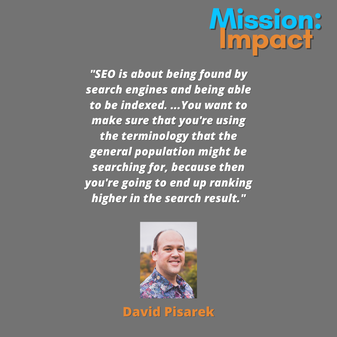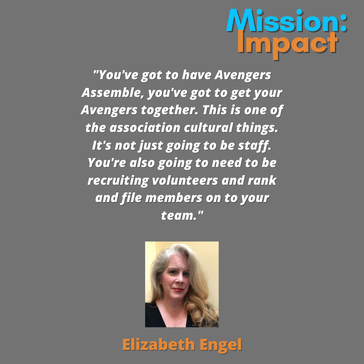Mission: Impact podcast & blog
Build a better world without becoming a martyr to your nonprofit cause
Listen on:
 In episode 52 of Mission: Impact, Carol and her guest, David Pisarek discuss:
Guest Bio: David is an award-winning web and digital solutions architect, designer and project manager with extensive industry experience focusing on education, not-for-profit, politics, healthcare, and government. An expert in his field, David worked full-time at Durham College for 11 years (seven of those while working at UOIT too). It was in that role where David performed the redesigns and programming and ran training sessions for over 100 staff. As a result of those years, David understands the internal processes and functioning of post-secondary institutions. He also worked as a professor and guest lecturer at Seneca College and Durham College where he taught web design, graphic design, computer science, and web development. And he developed the Web Design curriculum at a private, corporate training facility. Important Links and Resources:
 In episode 23 of Mission: Impact, some of the topics that Carol and her guest, Elizabeth Engel discussed include:
Elizabeth Weaver Engel, M.A., CAE, is Chief Strategist at Spark Consulting. For more than twenty years, Elizabeth has helped associations grow in membership, marketing, communications, public presence, and especially revenue, which is what Spark is all about. She speaks and writes frequently on a variety of topics in association management. When she's not helping associations grow, Elizabeth loves to dance, listen to live music, cook, and garden. Important Guest Links:
Contact Us:
Click "Read More" for Transcript: |
Archives
April 2024

Grace Social Sector Consulting, LLC, owns the copyright in and to all content in and transcripts of the Mission: Impact podcast, as well as the Mission: Impact blog with all rights reserved, including right of publicity.
|
Telephone301-857-9335
|
info[at]gracesocialsector.com
|
Grace Social Sector Consulting, LLC, owns the copyright in and to all content in, including transcripts and audio of the Mission: Impact podcast and all content on this website, with all rights reserved, including right of publicity.
|